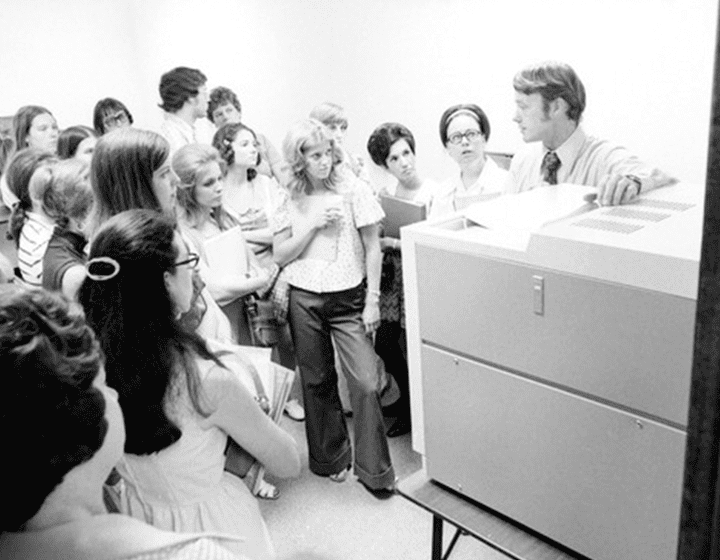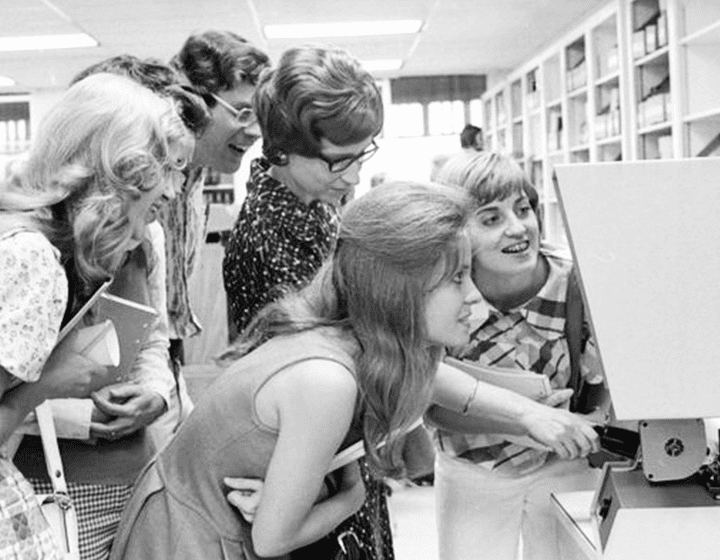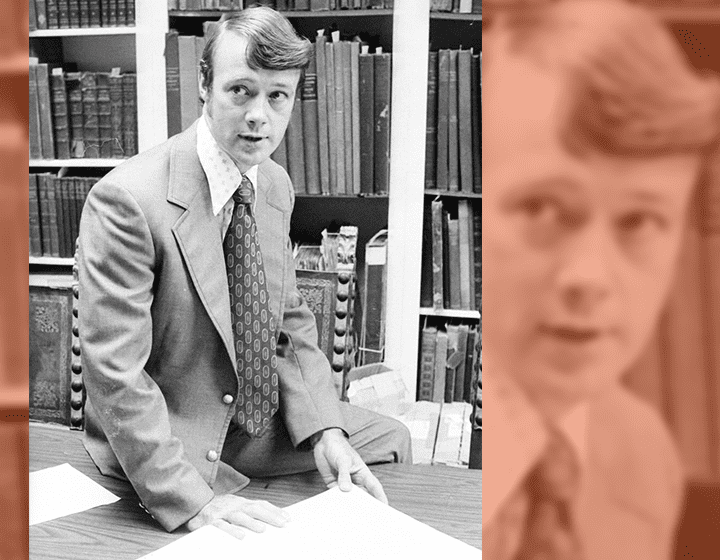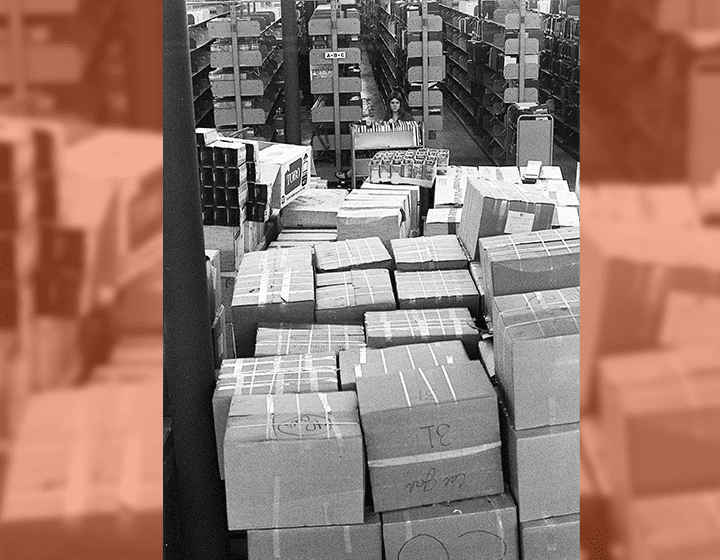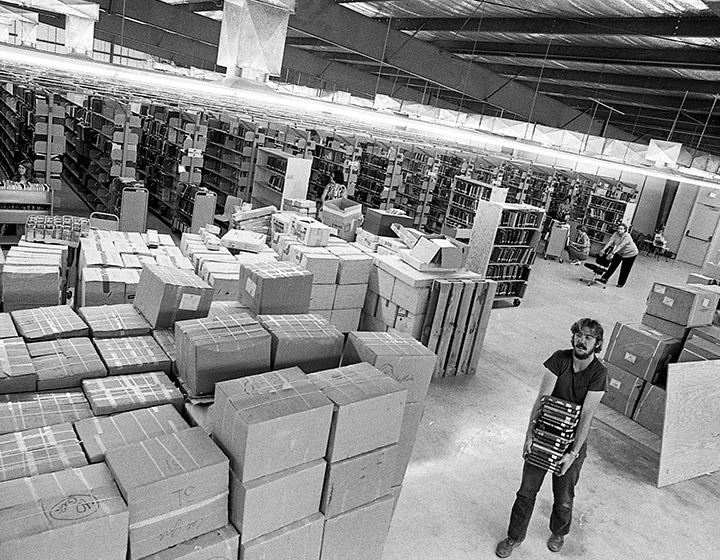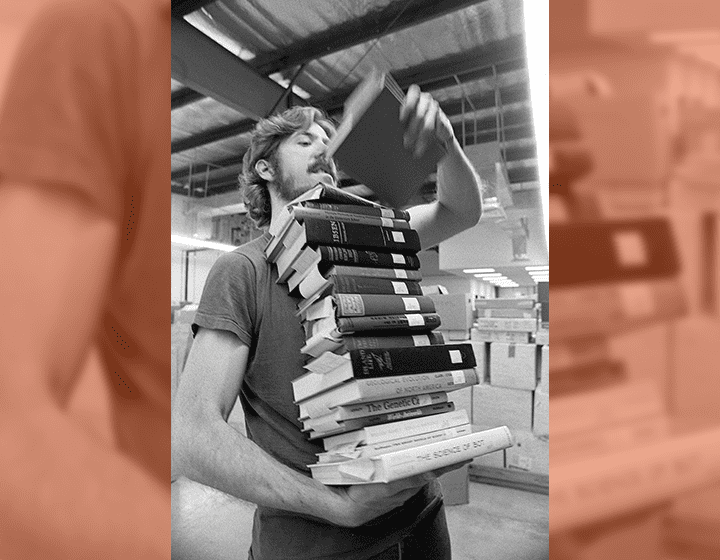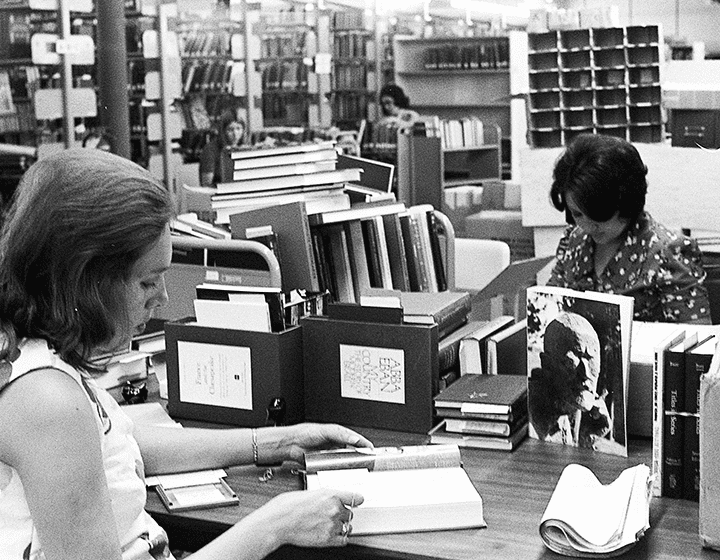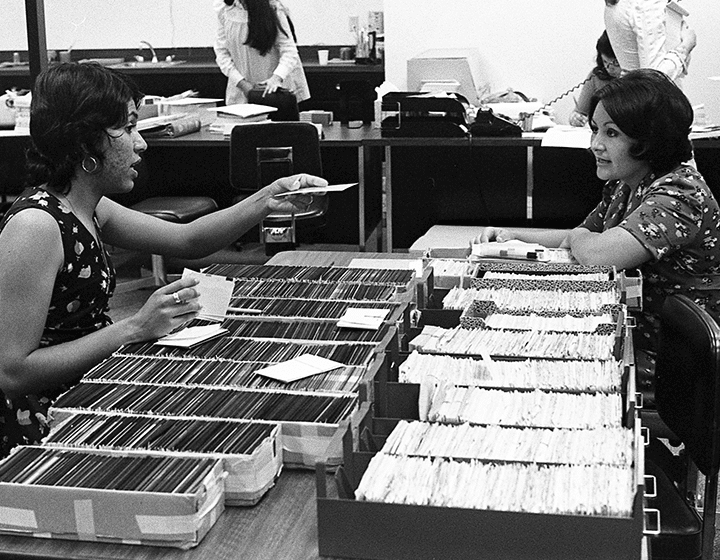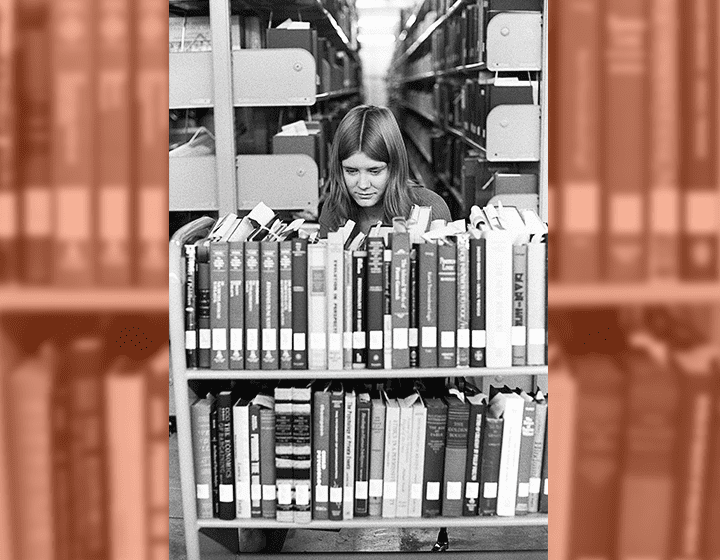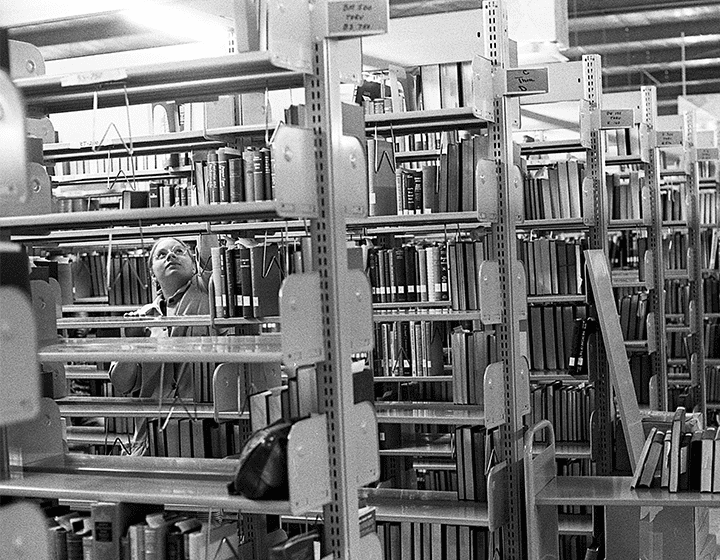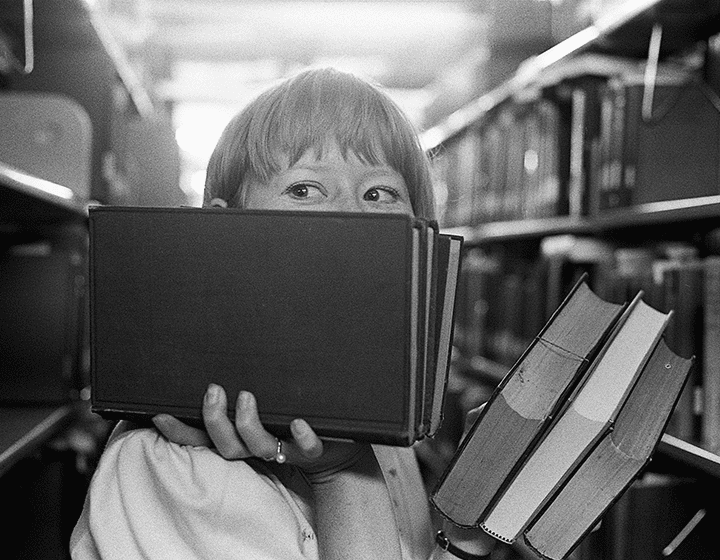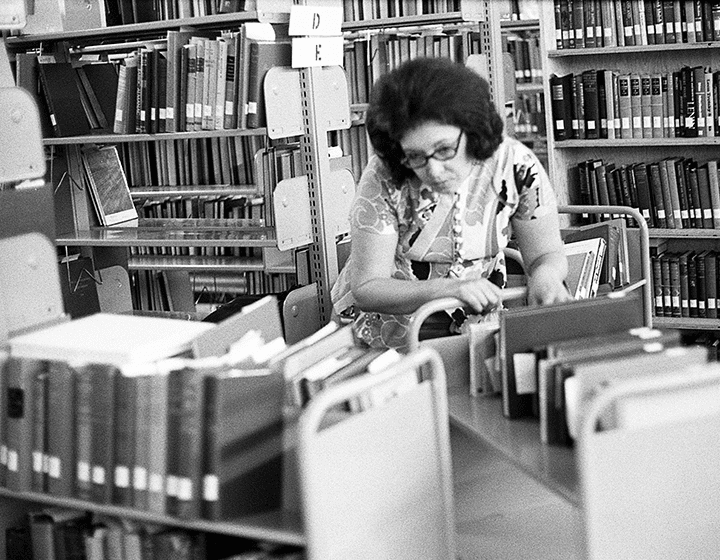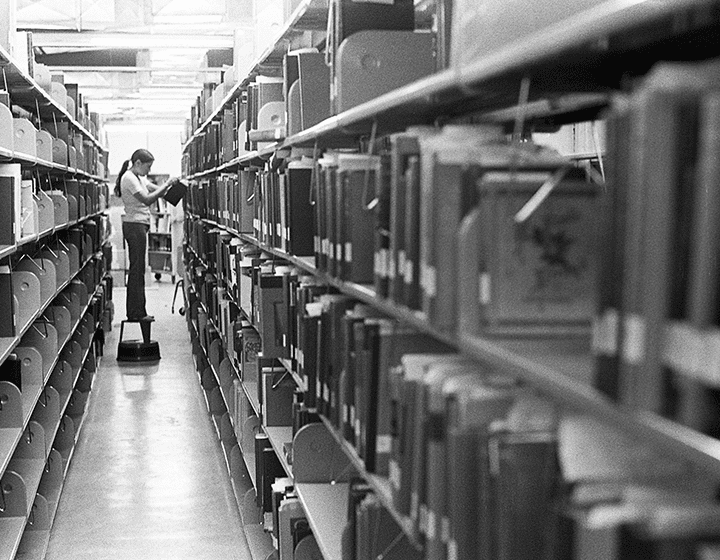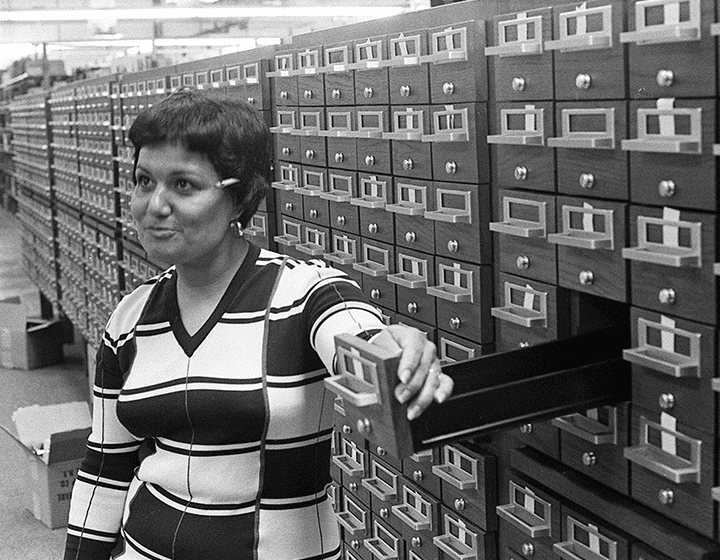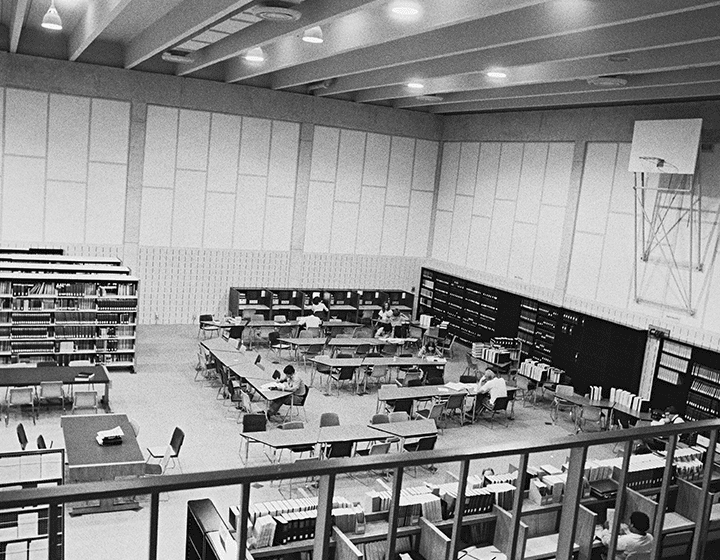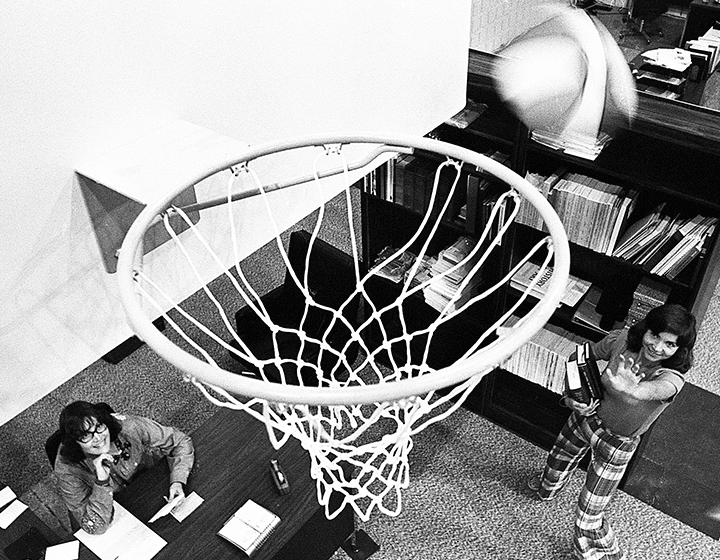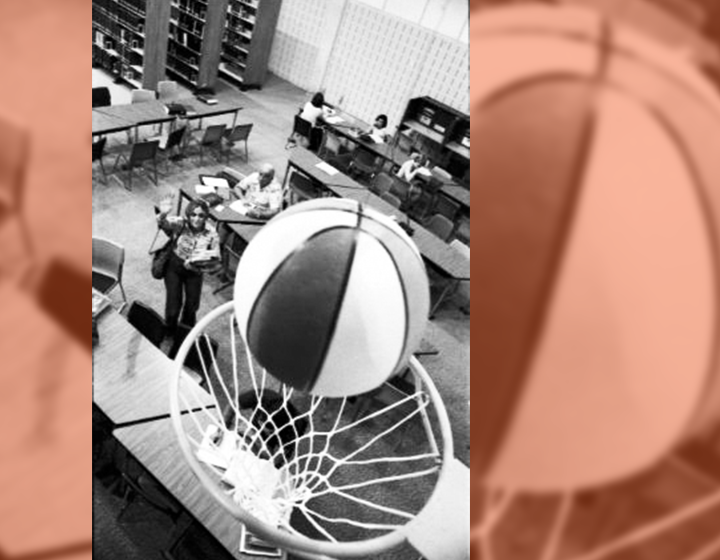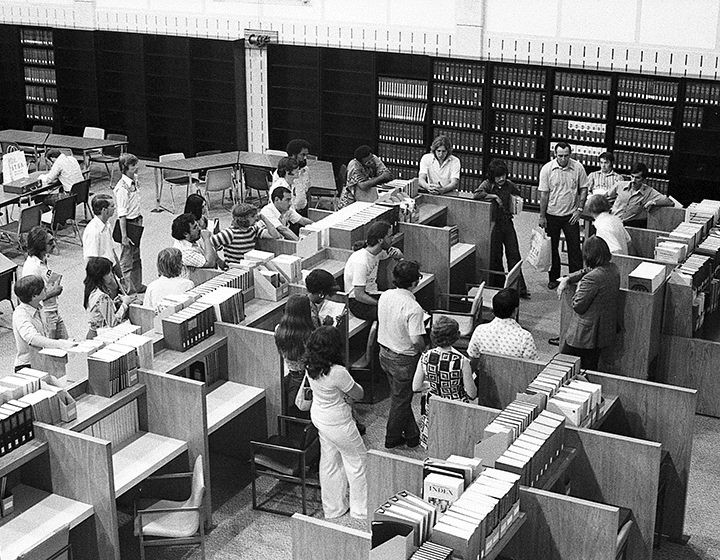
Loading the new book volumes onto the library shelves.
Scholar Fuel
It takes a tremendous effort—as well as books and other materials— to build a library from scratch
[ The following was originally published in the UTSA newsletter The Discourse in May and November 1973 ]
“When universities are rated or evaluated, it is on the basis of the quality of faculty and the quality of library,” President Peter T. Flawn said during the presentation of the Warden Collection to UTSA.
He continued, “The general collection is, of course, the working collection that supports the academic program across the board. What gives a library distinction—character—are the special collections that it acquires. Today we are here to mark the acquisition of UTSA’s first great special collection.”
Building a completely new library is a tremendous and challenging task. By fall [1973] UTSA will have acquired 200,000 volumes. By 1975 when the university moves to the permanent campus, approximately 300,000 volumes will be included in the UTSA library.
Man on a Mission
The man charged with the responsibility of building the library is Michael F. Kelly, named director of libraries in May 1972. Helping him are three librarians and nine support personnel. Three more librarians will join his staff this summer.
The complex task of selecting books for the library has been somewhat simplified by the use of a computer-printed profile that provides a description of the projected book needs of the university, Kelly says. “Variables such as specializations, degrees of difficulty, languages in which a book is written and areas of the world from which it comes are accounted for in the profile.”
He adds that lists of books used by other new universities in developing their libraries have been helpful in selecting the books for UTSA’s basic collection.
In addition to the books which UTSA is purchasing, Kelly plans to subscribe to about 3,000 periodicals and journals. Many of the back files of periodicals and journals will be bought on microfilm.
The library will also be a learning resource center. Kelly foresees a library that will include music listening areas and carrels equipped with projectors, slides, movies and filmstrips. Many multimedia materials will circulate.
Getting By
Kelly’s time must be devoted not only to building the comprehensive library that is expected to serve as many as 8,000 to 10,000 students in 1975 but also to providing library services for the graduate students who will attend classes in temporary facilities beginning in June.
A library reading room, including a reserve collection and extensive holdings of periodical back files on microfilm, will be accessible to students in the temporary classroom building. They will also be able to check out books from The University of Texas at Austin. A microfilm copy of the UT Austin catalog will be housed in the classroom building and a courier service will transport materials to and from Austin.
In the fall students will have access to UTSA’s 200,000 volumes. A $350,000 library surge facility, recently authorized by the UT System Board of Regents, will be constructed this summer on the UTSA permanent campus. These books, which will be delivered as students request them, will be listed in the card catalog in the classroom building.
Flawn and Kelly have described the surge facility as “the key to the successful development of UTSA’s library operation.”
“While the campus is under construction we will be preparing for the opening of the permanent library,” Kelly says. “When the university moves to the campus there will be no lag in providing complete library services.”
First Frantic Weeks
The books came by the truckload in November. When the unloading and unpacking were done, there were 150,000 volumes to be checked in, sorted, and shelved so that students could have access to them when the first summer session began.
The books thus far purchased by the university were shipped to a newly completed library auxiliary building at the UTSA campus. The books came in six trucks and 4,100 boxes from Zion, Illinois, where they were stored.
Thirty library employees worked frantically for six weeks to get the books cataloged and in order. They used a computer-assisted check-in system, assembly-line sorting and shelving, and a self-devised tracking system. “The books are shelved in Library of Congress sequence,” says librarian Sallie-ann Swanner, who supervised much of the work.
On Offer
It was a big job. Under the H (social science) classification alone, there were over 19,000 volumes.
Referring to attention-getting titles like The Brain Drain (under HD for economic history) and Put Offs and Come Ons (HM, sociology), library worker Leslie Johnson comments, “I just wish we had time to browse through the books.” Like a number of other library workers, Johnson spent her lunch hours reading.
Currently UTSA graduate students are using the 150,000 volumes. The books are delivered from the campus to the university’s temporary facilities as they request them.



